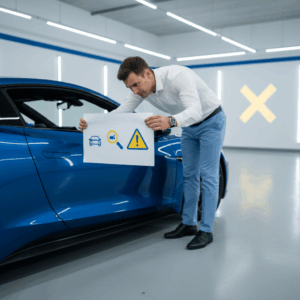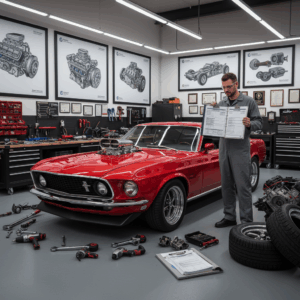Overview of Ride-Sharing Regulations
The rise of ride-sharing platforms like Uber and Lyft has transformed urban mobility, prompting the creation of diverse regulations worldwide. These regulations aim to balance innovation with public safety and service standards.
Key areas of focus include safety measures, insurance requirements, and ensuring high service quality. These factors shape the operational framework and trust in ride-sharing services.
The complex regulatory environment varies widely across different countries and cities, reflecting local priorities and legal landscapes. This diversity often creates challenges for ride-sharing companies operating internationally.
Key regulatory aspects: safety, insurance, and service quality
Safety regulations ensure that drivers meet strict standards, often requiring special licenses and background checks. These help protect passengers and maintain public confidence in ride-sharing services.
Insurance is another crucial element, with many jurisdictions mandating proofs of liability coverage to safeguard against accidents. This not only protects users but also limits legal risks for companies.
Service quality standards often include vehicle maintenance rules and customer service expectations. These regulations strive to provide consistent and reliable transport experiences for riders worldwide.
Variations of regulations by country and city
Regulatory frameworks differ greatly by location. Some cities require drivers to hold specific ride-sharing permits, while in others, general commercial licenses suffice. This reflects varying local policy goals.
Insurance requirements also vary, with some regions imposing higher coverage limits to address urban risk factors. Meanwhile, vehicle standards might be more stringent in places with stricter traffic safety laws.
Such variations necessitate that ride-sharing companies adapt quickly to local requirements, often implementing different operational models depending on the jurisdiction involved.
Impact on the Automotive Industry
The growing presence of ride-sharing platforms has significantly influenced the automotive industry, encouraging new forms of competition and innovation. This transformation challenges traditional automotive business models.
Automakers are adapting by developing technologies and services tailored to ride-sharing needs, focusing on efficiency, safety, and connectivity to meet evolving consumer demands.
The regulatory framework surrounding ride-sharing also shapes how automotive companies design vehicles and collaborate with transportation platforms, driving technological advancement.
Market competition and innovation driven by ride-sharing
Ride-sharing services have intensified competition by offering flexible, convenient transport alternatives, prompting auto manufacturers to innovate rapidly. This includes enhancing vehicle technology tailored for shared mobility.
Innovation efforts focus on fuel efficiency, in-car technology, and vehicle durability to meet the rigorous requirements of ride-sharing fleets. This benefits consumers through more advanced and reliable vehicles.
Additionally, collaborations between automakers and ride-sharing companies are fostering developments like app integrations and specialized vehicle models to optimize urban transport.
Tensions with traditional transportation services
The rise of ride-sharing has created tension with traditional transport sectors such as taxis, which often face stricter regulations and less flexibility. This conflict influences regulatory debates and market dynamics.
Traditional services argue that ride-sharing platforms enjoy unfair advantages, triggering calls for harmonized regulations that level the playing field while maintaining consumer choice and safety.
These tensions can impact the automotive industry by shaping demand patterns and regulatory pressures, requiring manufacturers to anticipate changes in transportation ecosystems.
Regulatory classification: public vs. private service challenges
Determining whether ride-sharing services are classified as public or private transportation presents significant regulatory challenges. This classification affects licensing, insurance, and operational rules.
Public service classification imposes stricter oversight, while private service status offers more flexibility but raises concerns over safety and accountability. Balancing these perspectives remains complex.
For the automotive industry, this classification impacts how vehicles are designed, insured, and integrated into broader mobility systems, influencing future regulatory compliance strategies.
Future Challenges for Automotive Industry
The automotive industry faces significant challenges as it adapts to evolving regulations related to ride-sharing. Key among these is the integration of autonomous vehicle laws, which demands clear and consistent frameworks.
Alongside this, the push for electrification and stricter emission standards requires adaptation in vehicle design and operational practices. These changes influence how ride-sharing services evolve and comply with sustainability goals.
Integration of autonomous vehicle regulations
Incorporating autonomous vehicles into ride-sharing fleets requires comprehensive regulations to ensure safety and public trust. Policymakers must address liability, technology standards, and operational protocols effectively.
The complexity of autonomous vehicle legislation stems from varying levels of vehicle autonomy and regional legal differences. Harmonizing these rules is crucial for scalable deployment and acceptance in ride-sharing services.
Automakers and ride-sharing companies must collaborate closely with regulators to develop standards that support innovation while safeguarding users, making regulatory clarity a top priority.
Electrification and emission regulation influence
Electrification presents both an opportunity and a challenge for the automotive industry within ride-sharing. Regulatory mandates on emissions push companies to transition to electric vehicles, impacting fleet management and infrastructure needs.
Stricter emission standards also drive innovation in battery technology and energy efficiency. Ride-sharing platforms must adapt to these regulations to reduce environmental impact and comply with government policies.
This transition requires significant investment in vehicle technology and charging infrastructure, shaping the future of urban mobility in a more sustainable and regulation-compliant way.
Regulatory Requirements for Ride-Sharing Operations
Ride-sharing operations must comply with strict regulatory requirements to ensure passenger safety and service reliability. Governments focus on both driver qualifications and vehicle standards.
These regulations aim to minimize risks by mandating comprehensive checks on drivers and vehicles. Compliance boosts trust in ride-sharing services and protects public interest.
Driver licensing and background checks
Drivers are typically required to obtain specific licenses that certify their ability to operate ride-sharing vehicles safely. These licenses differ from standard driver’s licenses in many jurisdictions.
Background checks are also mandatory to screen for criminal records and driving history. This process ensures that drivers meet moral and legal standards set by authorities, enhancing passenger security.
Such requirements help reduce incidents of misconduct and unsafe driving, providing a safer environment for riders. Regular renewals and training may also be enforced to maintain standards.
Vehicle safety and quality standards
Vehicles used for ride-sharing must comply with defined safety and quality benchmarks. This often includes regular inspections to check mechanical conditions and cleanliness standards.
Standards may specify vehicle age limits, emission controls, and functional safety features like airbags and brakes. These ensure that rides are comfortable and hazard-free.
Maintaining vehicle quality protects both drivers and passengers, reduces breakdowns, and supports sustainable operations aligned with broader environmental policies.







